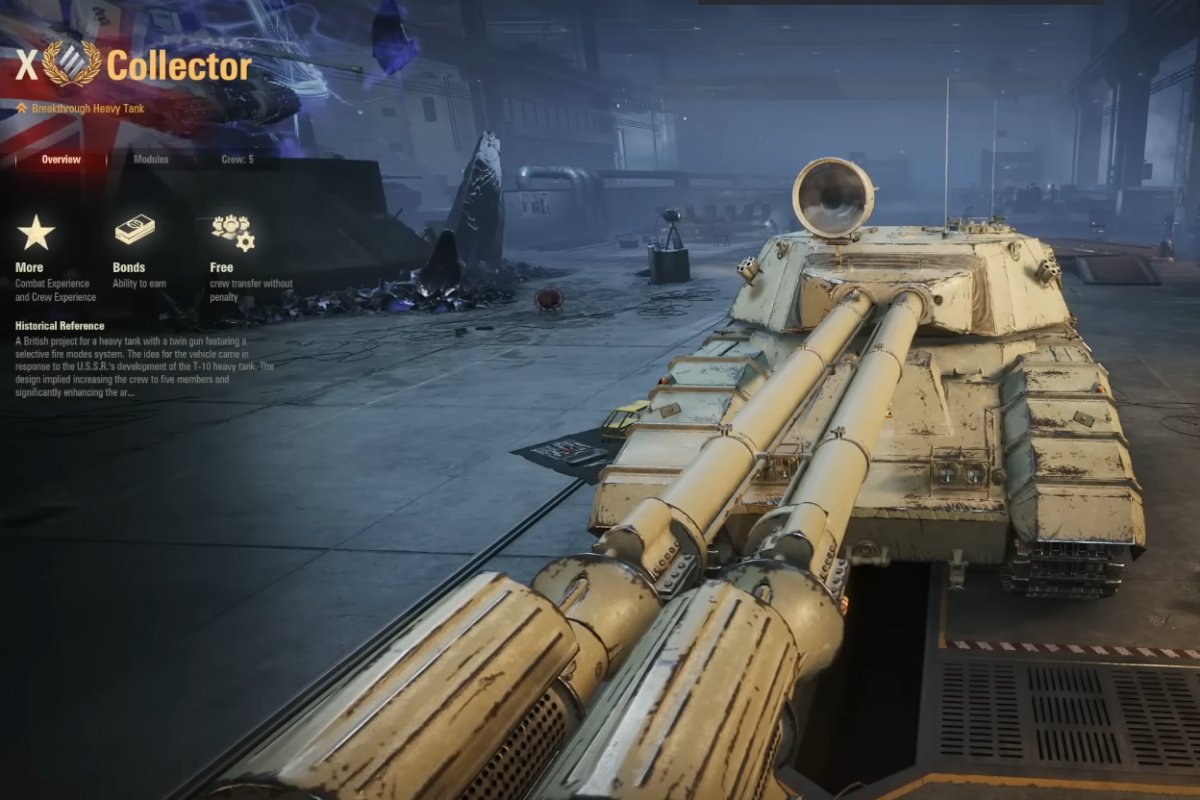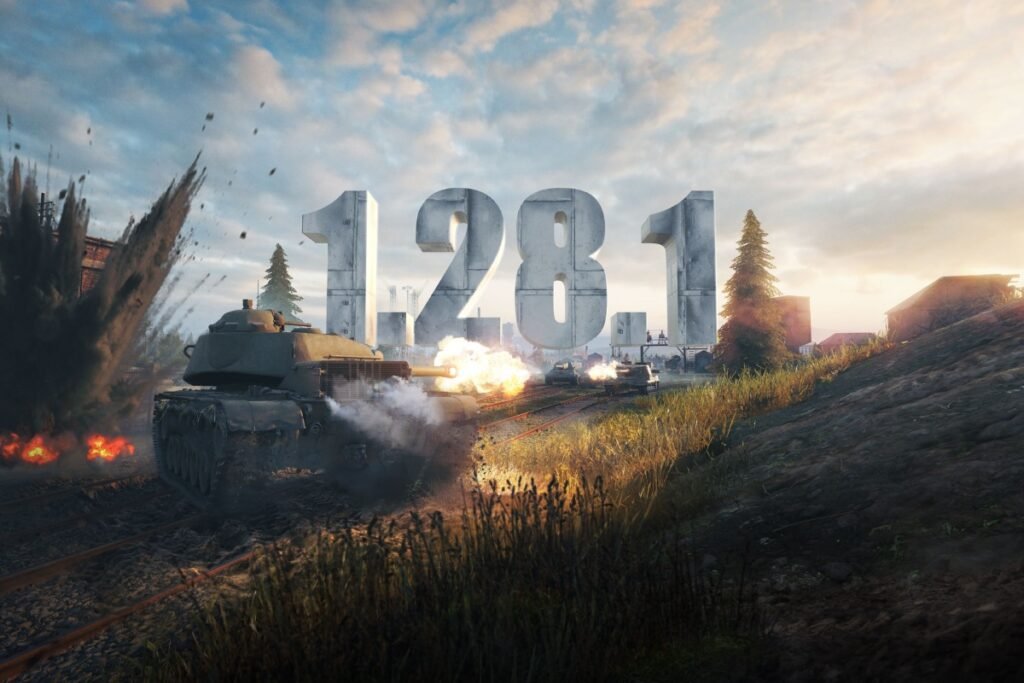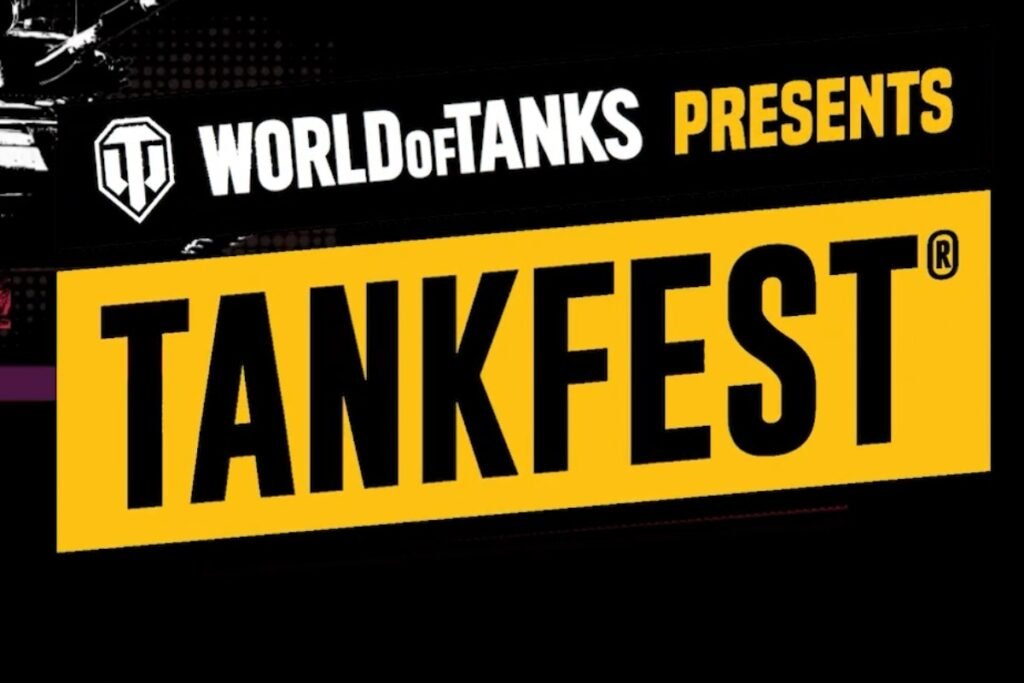When the dust from the garage doors settles and the engine revs die down, the reality hits: the upcoming World of Tanks patch isn’t just about faster loading or prettier maps. It’s about the tanks—11 new vehicles (plus one leak) currently undergoing Supertest, each loaded with unconventional mechanics, bold stats and serious potential to shake up the meta. For PC and console players alike, this means our wheelhouse, roles and expectations might shift dramatically.
It’s one thing to promise “new tanks”, but when these machines include twin-barrel salvo bursts, gun-cooling mechanics, deep-rifled range-linked alpha, and wheeled tank destroyers with sniper precision—you’ve got to ask: Are these simply power-creep wrapped in novelty, or genuine design evolution? This article dives deep into the 11 new tanks listed in the update 2.0.1 notes, examines what’s confirmed vs what’s speculative, and unpacks how these machines feel in early hands, how they might reshape gameplay, and where the risks lie.
TL;DR – Key Takeaways
- Eleven new tanks are in Supertest for Update 2.0.1, each featuring bold mechanics (double-barrel, deep-rifled, gun-cooling, clip lights, wheeled TD) and subject to change.
- The design intent shifts roles: heavies that must push (rather than camp), lights that burst damage instead of spotting, TDs with unique pace rather than static sniping.
- Early numbers (e.g., 750 alpha on a Tier 9 assault TD) raise red flags for power-creep, but many machines include meaningful trade-offs (exposure time, mode-switch penalties, range limitations).
- Communities are cautiously optimistic—these mechanics are interesting, but if numbers overshoot or monetisation steps in, backlash is likely.
- For players gearing up: focus on mastering niche roles rather than chasing raw alpha. These tanks reward timing, position and commitment—not just “pop and reload”.

Major Insights into the NEW Tanks Wave
What’s at Stake: Redesigning Roles, Not Just Adding Stat-Spikes
With Update 2.0, Wargaming has signalled major ambitions: a revamped Garage UI, new Tier XI on the horizon and hundreds of vehicles rebalanced. Within that broader framework, this wave of new tanks under Supertest (and the 2.0.1 build) is where experimentation is visible. These aren’t your typical heavies or mediums with slightly more hp—they are hybrids, role-twisters and niche killers.
Take for example the Polish “deep-rifled” heavy: a tank that hits up to 800 alpha at point-blank and then falls off. That is not a “more alpha” version of older tanks—it’s a design forcing close-range brawling, penalising passive knocking‐from‐afar. The “gun-cooling” wheeled TD isn’t just faster; it asks players to pace their shots rather than spray and pray. These design signatures tell a story: WG wants more decision, more tempo, more risk in each engagement.
Of course, risk means reward—but also potential imbalance. Without meaningful trade-offs, these tanks could become line-skipping meta-breakers. Community chatter already flags that tension: “Just waiting for the 750 alpha TD to get nerfed after live” and “cool mechanics, but what if they stack into pay-wall?” (reddit threads)
Three Big Promise vs Three Realistic Pitfalls
- Promise: Fresh mechanics (double-barrel with mode swap, gun-cooling, range-linked alpha) that reward skill and decision rather than just upgraded stats.
- Promise: Role clarity—lights that hunt and burst, heavies that push, TDs that hold angles—but with a twist.
- Promise: Shifted behaviour in games: less pixel-peeking farms, more commitment, more dynamic flank action.
- Pitfall: If numbers are too generous, what starts as “interesting niche” becomes “forced meta” and kills diversity.
- Pitfall: Additional mechanics (mode switches, cooling times) may feel gimmicky or artificial if not well balanced with core gameplay loops.
- Pitfall: Supertest stats are provisional. Community trust erodes fast if release diverges wildly from test promises or if monetisation plays in.
Deep Dive: The 11 New Tanks Being Tested
Below is a breakdown of each machine: what’s known, how it plays (or is likely to play), and what players should watch out for. Keep in mind that all listed specifications are based on current Supertest data and may change during balancing. The official release timeline has not yet been confirmed, though most of these vehicles are expected to appear around the end-of-year Holiday Ops period. A detailed follow-up article with final stats and gameplay impressions will be published once they go live in-game.
1. Tier 9 American heavy: M60 120
This is essentially a modified version of the old M6 heavy — same hull and turret, but upgraded to a 120 mm gun delivering ~440 alpha with 10° gun-depression. Mobility clocks in at close to 20 hp/ton and with a turbo it reportedly can reach 50 km/h top speed in ideal conditions. The double-track mechanic remains (so if your main track is knocked you can still limp backward). The gun-handling appears solid for the class. The caveat? The massive weak spots persist and the armour layout hasn’t dramatically shifted.
In practice: this machine will appeal to players who want a heavy with more punch and decent speed. However, the unchanged weak points mean that skilled opponents will still exploit them—and the 440 alpha isn’t enough of a leap to turn the M60 120 into a super-tank. It becomes “bigger gun slapped on familiar chassis”, rather than revolution. That’s not bad—it just means players shouldn’t expect the beast of the meta out of the box.
Tip: use the mobility to get into hull-down positions, exploit the depression and speed—but don’t rely on heavy armour to absorb hits.
2. Tier 9 American light: (10-round autoloader light)
This one flips the usual light-tank paradigm. 200 alpha per shot sounds low, but the twist: 10-shell magazine, ~42 second full reload, 2-second delay between rounds, exposure time roughly 18 seconds to empty a full clip, top speed ~65 km/h (34.83 hp/ton), camo ~13.9%, view range ~400 m. It’s more a “damage dealer / support scout” than a sneaky bush spotter.
In real games: you won’t always land the full clip unless the target is locked or tracked. The lightweight camo means you’ll be spotted easily. It demands you create or exploit windows—third-party fights, support flanks, tracking plays. The risk is high exposure; the reward is big damage if you catch a flank right.
Tip: use it later in battles when enemy focus is elsewhere, avoid initial vantage where you’ll likely take return fire before getting your full clip away.
3. Tier 10 British heavy: Collector (FV225)
A blocky, short-profile heavy with twin-gun design. 350 alpha per barrel, so double-shot bursts hit ~700. DPM ~3,129. Gun-depression ~6° (unusual for British heavies). Turret armour around 250 mm with good angling, no commander hatch (harder to hit). Top speed ~43 km/h with ~15 hp/ton ratio.
Mechanic note: Like other British twin-guns, but here there’s a trade-off: salvo mode requires a switch, and in theory penalties in accuracy, stabilization or mobility occur when you switch to “double-shot” mode. The single-gun mode allows you to travel and poke relatively safely, then switch into salvo when you see a clean window.
In practice: this tank is exciting because it forces decision-making — do you keep poking singles or commit to the burst? If balance holds, this could be one of the most interesting twin-gun flows yet. If not, it might feel like double-gun gimmick with awkward cooldowns.
Tip: treat the single-gun mode like your travel/peek state; switch into salvo only when you’ve created space or confirmed target. Avoid switching mid-skirmish unless you have cover.
4. Twin-barrel variant: “Double-barrel Black Prince” Tier VII assault heavy tank
Assuming this variant (twin-barrel version of the classic Black Prince heavy) hits live, it sports 150 alpha per barrel, ~5.37 s reload per barrel, and the standard dual-barrel mechanics (single fire or simultaneous). It is essentially a heavier-gun version of what fans of the original Black Prince expect—fun, aggressive, burst-capable.
Caveats: twin-barrel means exposure risk on salvo, you’ll want to time your burst when enemy is committed. Without that, you might press both guns into return fire rather than clean damage.
5. Tier 9 British heavy: FV214 T
This one feels like a refined heavy rather than wild experiment. 370 alpha, excellent gun-depression (~10°), good gun handling and ~2,200 DPM. Comparable to the Conqueror in many respects, just tweaked alpha and module stats. Likely a premium or special vehicle rather than standard tech-tree.
In practice: strong but safe. Expect it to slot into “solid heavy choice” rather than “meta-breaker”. Unless something shifts in balancing, it will be more predictable and less risky than the twin-guns or other hybrids.
6. Tier 10 Chinese breakthrough heavy: Yong Bing
A wild combo machine: double-barreled gun (440 alpha per barrel, 880 double-shot), ~11.98 s reload, gun-switch time 6 s (half of reload). BUT also a jet-boost system: +150 engine power with 10 charges, each lasting 4 s, boosting power-to-weight to ~32.35 and top speed from 50 to ~57.5 km/h with turbo. It also multiplies turbo bonus by 1.5×. So we have DB + boost. Rare combo.
In practice: if you master the boost and salvo timing, you might dominate flanks or get into chokepoints fast and unload burst. If you mis-time, you’ll find yourself exposed with big guns and big reloads, and the double-barrel switch plus boost cooldown creates windows where you’re vulnerable.
Tip: Use boost to commit into flank, get into cover, switch guns, fire salvo, back out while reloading/boost recharge. Don’t treat it like a standard heavy slugfest tank.
7. Tier 9 Japanese (or mixed nation) wheeled TD: Ashigaru
The first wheeled high-tier TD in the list. 390 alpha, 3,437 DPM, excellent accuracy that improves when you wait a few seconds between shots (gun-cooling mechanic)—stat posts cite ~0.21 dispersion best-case. Top speed ~39 km/h, power-to-weight ~24 hp/ton. So wheels aren’t ultra-fast; the emphasis is on precision sniping rather than zooming flank raid.
In play: this is a specialist’s tank. Move (on wheels) into vantage, settle, wait for gun cooling, snap the shot. Rinse, reposition. If you spam without delay you’ll have average impact. If you wait you earn lasers. It trades mobility for precision, but that trade-off is meaningful.
Tip: pick angles where you can settle into cover, not open map flanks. Use the wheels for repositioning after each shot, not for full-on flank rushes.
8. Tier 10 Polish breakthrough heavy: Wz. 64GC “Bzyg”
Officially listed in 2.0.1 release notes and WG social media. Lofty stat: up to 800 alpha at point-blank (<50 m), dropping to ~400 at long range. Mechanic is “deep-rifled gun” – the closer you are, the harder you hit. Elsewhere mobility mid-30’s km/h, hull armour ~230 mm, strong turret, good mobility (~14.8 hp/ton, ~36 km/h).
In practice: This one is polarising—and intentionally so. It punishes passive, long-distance play. A camper at 300 m might feel gutted because their alpha is half. A push-heavy aggressor will thrive and can burst opponents who attempt to gimp. It’s a design that forces behaviour change.
Tip: take city lanes, short lines of sight, close-quarters. Don’t expect to sit back and farm from afar. The risk is clear: get into brawl range or your gun becomes mediocre.
9. Tier 9 Italian support medium: Serpente
One of the 11 listed tanks. The vehicle looks “absolutely ridiculous” in form yet seems very powerful: a tier 9 Italian medium tank (support medium role), double-barrel without autoloader, top speed ~60 km/h, salvo hits up to ~840. The design: shift from Italy’s autoreloader identity to burst-timing and mobility. Accuracy and stabilization improve in salvo mode. Armour basic; speed + timing is defence.
In practice: Players who excel at flanking, picking windows, committing to burst will love it. But if you mis-time your salvo or get caught mid-reload you’ll be punished. It demands more nuance than standard medium. The payoff is high, but so is the skill ceiling.
10. Tier 8 Swedish medium: Strv T6
This one is lower tier and less radical but still worth noting: around 2,200 DPM, aim time ~2.2 s, turret armour ~250 mm, good gun handling. A slick flanker/medium with support potential. Likely a premium vehicle.
In practice: A reliable medium for players who want a solid ride without wild gimmicks. It may not dominate meta but gives flexibility and comfort, which—especially for console players—might be welcome.
11. The “Massive Dual-Barrel” Tank (unnamed placeholder)
The final tank on the list: a massive dual-barrel machine with absurdly long guns, nearly as long as the hull. Double-shot mechanic: 840 damage with an 8-second reload and 2-second charge time per salvo. Individually fireable too, but salvo is more efficient. Exposure time is lower if you commit to burst. No official name yet in our list, just a placeholder in the Supertest wave.
In practice: this is early speculation, but the clear risk is being “too gimmicky” or “too niche”. The challenge will be balancing burst-risk vs reward and ensuring it’s not simply “press two guns and win” without trade-offs.
Early Impressions & Community Sentiment
The Supertest wave has elicited mixed reactions. On one hand, players are excited: the mechanics are fresh, role shifts are visible, and the promise of interesting trade-offs (rather than “just bigger numbers”) is appealing. On Reddit and community forums some say:
“The Polish heavy almost forces you to push – if you hang back you’re useless.” “Finally a light tank that isn’t just a bush-camper, but a risky damage machine.” “Twin-gun heavy with mode-switch looks fun… unless the penalties are too steep.”
On the flip side, skepticism remains strong. Questions being asked: Will these tanks be part of paid bundles? Will their mechanics feel forced or gimmicky once live? Will they overshadow existing vehicles and create meta-imbalances? For example, a heavy that hits 800 alpha might provoke cries of “event-tank OP” unless carefully gated.
For console and PC alike: players should monitor how live-server outcomes unfold (win-rates, usage stats, exposure times). One of the biggest mistakes would be chasing hype without verifying how these tanks integrate into actual battles.
What Players Should Focus On
Rather than ask “which of the new tanks is best”, players should ask: “Which of these mechanics suits my play-style?” That matters more. Here are targeted tips:
- If you’re a heavy-fan who relishes brawling and pushing: look at the Polish heavy (Bzyg) and the Chinese breakthrough heavy (Yong Bing). But condition yourself to close-range fights and aggressive sandboxing.
- If you like support and timing over raw alpha: Serpente and Ashigaru will reward flanks, precision and window attacks. They’ll punish mistakes harshly.
- If you favour “safe and solid” rather than wild risk: the Strv T6 and FV214 T look like dependable picks without learning new mechanics from scratch.
- For console players, wheel-based controls and mobility (Ashigaru) might translate differently than PC—so test thoroughly in the Common Test or Open Beta to evaluate aim-assists, latency and exposure times.
- Keep an eye on official release notes for balance tweaks. Many of these stats are from Supertest and subject to change. For example, the deep-rifled drop-off, the cooling time on Ashigaru, and the mode-switch penalties on the twin-guns may all be adjusted before live. Interpret numbers as “upper bound”.
Balancing and Monetization Concerns
Whenever a batch of new high-tier tanks appears, monetisation questions follow. Will these tanks be event-locked, premium-only, blueprint-only? If such access is gated or tied to paid mechanics, player backlash can spike quickly. The design intent seems credible (mechanics first, stats second) but the packaging will matter.
In terms of balance, these vehicles carry built-in trade-offs—but the community’s tolerance for “mechanics” depends on how severe those trade-offs are. If the Polish heavy’s 800 alpha at <50 m becomes usable at 80 m with minimal penalty, the design fails. If the gun-cooling on Ashigaru is too short, everyone will spam and it becomes just “another sniper”. These are not far-fetched concerns.
Looking Ahead: How This Wave Could Shape WoT’s Future
If this wave lands well, it could mark a pivot: roles being more defined, gameplay tempo shifting, flank-pressure rising, long-range passive kills diminishing. That would be a welcome change in many players’ eyes. If it falters—or becomes pay-wall backed—it risks alienating players and reinforcing the “more tanks, same problems” critique.
Console and PC players alike should treat these as experiments. Join the Common Test, give feedback, and watch live-server metrics once the patch drops. A strong sign will be usage rates: Are these tanks played widely or remain niche? Are win-rates balanced or wildly skewed? Are they accessible or locked behind payment?
Conclusion
The 11 new tanks in the Supertest wave for World of Tanks 2.0/2.0.1 represent one of the most dynamic sets of experiments the game has seen in years. They’re daring, some are quirky, and all demand new thinking. For gaming veterans who have grown bored of “same meta, bigger numbers”, this is a breath of fresh air.
That said, they are not a silver bullet. Their success depends on balance, accessibility, and how they integrate into actual battleflow. If the trade-offs hold, they’ll be fun, satisfying and diverse. If they don’t, they risk becoming meta breakers or gimmicks players avoid.
For players planning ahead: pick the mechanics aligned with your style, test in the Common Test, give feedback, and — most importantly — don’t chase the hype. Mastery beats novelty. If you can learn the timing, the mechanics, the commitment windows, you’ll get the most out of this wave. In short: these tanks aren’t just “new guns on metal”—they’re new roles on tracks, and that makes them worth your attention.


